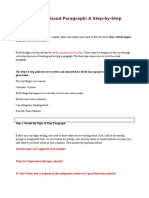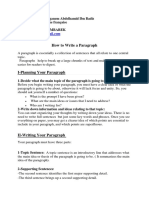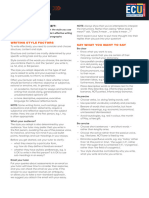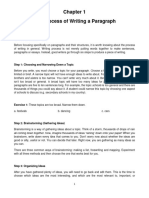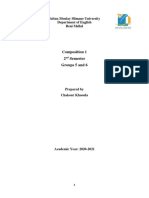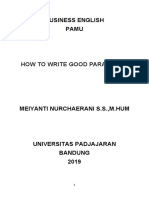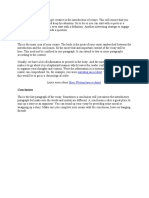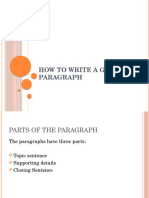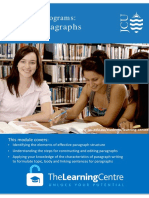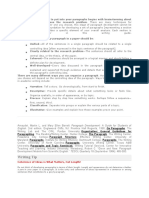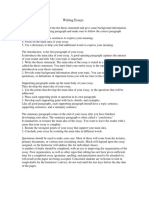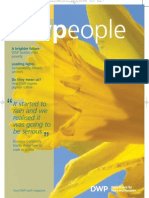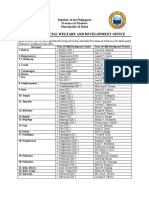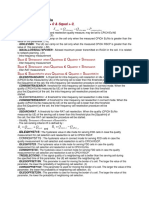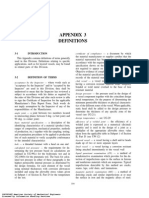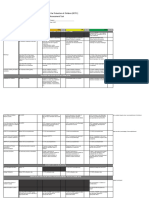University of M’hamed Bougara - Boumerdes
Faculty of Hydrocarbons and Chemistry.
Lesson n 2:
Group: STH20 1stsemester
How to Write a Good Paragraph: A Step-by-Step Guide
Writing well composed academic paragraphs can be tricky. The following is a guide on how to
draft, expand, refine, and explain your ideas so that you write clear, well-developed paragraphs
and discussion posts:
Step 1: Decide the Topic of Your Paragraph:
Before you can begin writing, you need to know what you are writing about. First, look at the
writing assignment topic. Then ask yourself:
• On what topic am I supposed to be writing?
• What do I know about this topic already?
You should better understand your topic and what you need to discuss.
Step 2: Develop a Topic Sentence:
Before writing a paragraph, it is important to think first about the topic and then what you want to
say about the topic. Most often, the topic is easy, but the question then turns to what you want to
say about the topic.
Strong paragraphs are typically about one main idea or topic, which is often explicitly stated in a
topic sentence. Briefly, the topic sentence promises your readers what they are about to read in
your paragraph
Step 3: Demonstrate Your Point and produce supporting sentences:
After stating your topic sentence, you need to provide information to prove, illustrate, clarify,
and/or exemplify your point.
Ask yourself:
• What examples can I use to support my point?
• What information can I provide to help clarify my thoughts?
• How can I support my point with specific data, experiences, or other factual material?
• What information does the reader need to know in order to see my point?
Here is a list of the kinds of information you can add to your paragraph:
•Facts, details, reasons, examples
• Information from the readings or class discussions
• Paraphrases or short quotations
• Statistics, polls, percentages, data from research studies
• Personal experience, stories, anecdotes, examples from your life
�Adding transitional or introductory phrases like: for example, for instance, first, second, or last
can help guide the reader. Also, make sure you are citing your sources appropriately.
Step 5: Concluding sentence:
After illustrating your point with relevant information, add a concluding sentence. Concluding
sentences provide another device for helping you ensure your paragraph is unified. Concluding
sentences have a crucial role in paragraph writing:
They draw together the information you have presented.
You can produce it through:
• Summarizing the point(s) you have made.
• Repeating words or phrases from the topic sentence.
• Using linking words that indicate that conclusions are being drawn (e.g., therefore, thus,
resulting).
Step 6: Look Over and Proofread:
The last step in good paragraph writing is proofreading and revision. Before you submit your
writing, look over your work at least one more time. Try reading your paragraph out loud to make
sure it makes sense. Also, ask yourself these questions:
• Does my paragraph answer the prompt and support my thesis?
• Does it make sense? Does it use the appropriate academic voice?
What is the best topic sentence?
a. In the USA, many students study Spanish language
b. it is important to learn foreign languages.
c. in college, people need to know foreign languages.
……………………………………. First, many schools require two or more years of
foreign languages study for graduation. Secondly, learning other languages helps us communicate
with people from other countries. Also knowing a foreign language can lead to job opportunities.
Finally, for many people, studying foreign language is fun; there are many reasons to learn
foreign languages.
Note:
The paragraph must be indented once.
The paragraph must be written in one block as in the previous activity.

